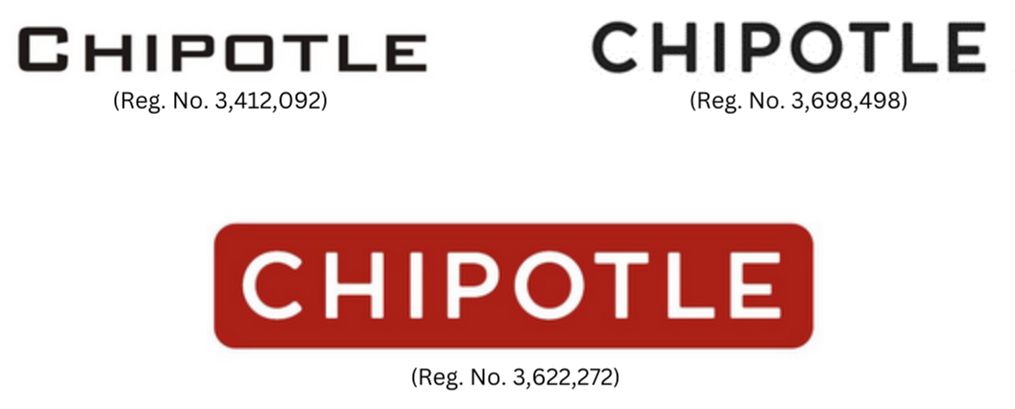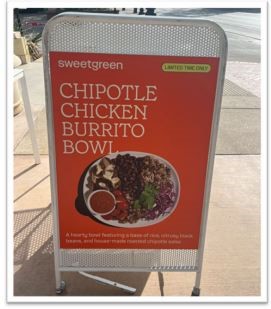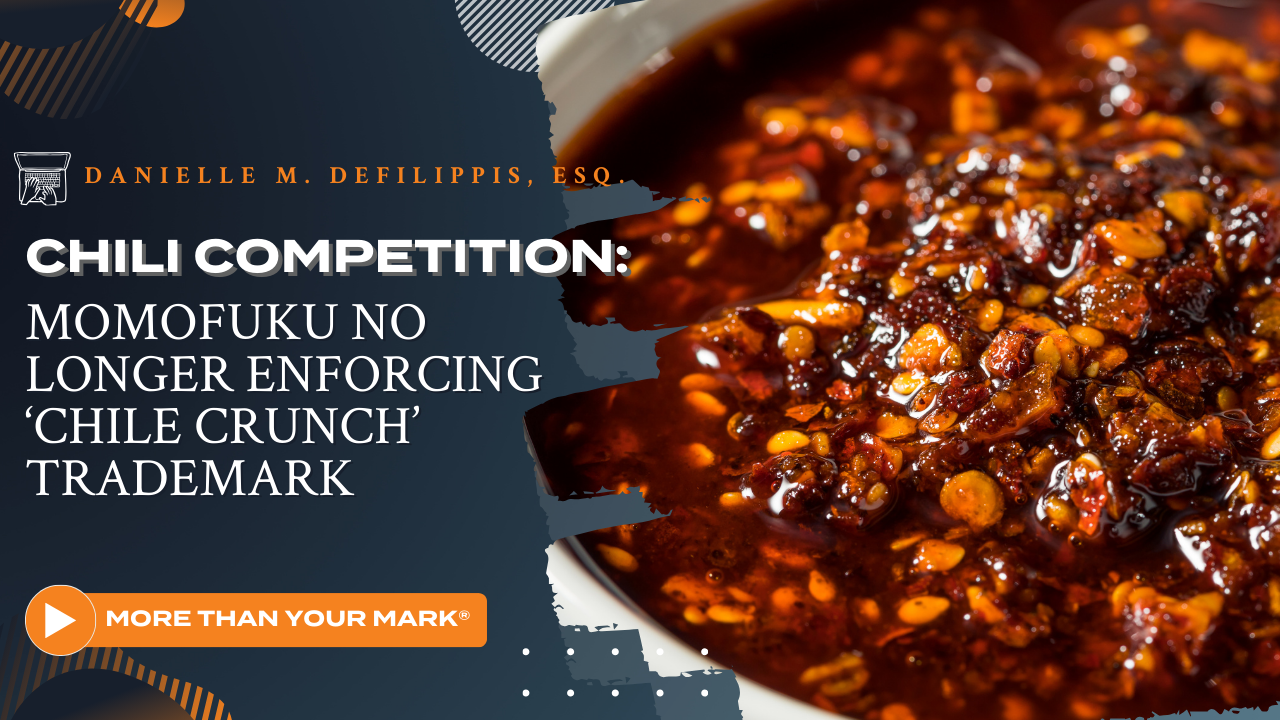Chipotle’s Trademark Challenge Leads to Sweetgreen Renaming New Menu Item

Earlier this month, Sweetgreen launched a new menu item it dubbed the “Chipotle Chicken Burrito Bowl,” and its fast-casual competitor Chipotle Mexican Grill objected to the name. In its complaint, Chipotle alleged that the name and the way in which Sweetgreen advertised the “Chipotle Chicken Bowl” food product, which featured similar ingredients to Chipotle’s burrito bowls, violated its trademark rights held by its federal registrations covering the CHIPOTLE word mark and stylized variations of CHIPOTLE:

The heart of Chipotle’s claim against Sweetgreen is that Sweetgreen used the word “Chipotle” as a trademark, and not merely to describe an ingredient or characteristic of its new burrito bowl menu item. Chipotle’s complaint claims the following trademark rights in using the word CHIPOTLE in connection with the provision of fast-casual restaurant goods and services:
- all capital lettering;
- font stylizations; and
- Adobo Red color.
Chipotle maintains that these distinctive features of its trademarks serve as source identifiers to Sweetgreen’s customers.
The complaint included a few screenshots of Sweetgreen marketing materials promoting the new “Chipotle Chicken Burrito Bowl” product purportedly in violation of Chipotle’s trademark rights, and two are displayed below:

(Complaint at paragraph 24)
In this advertisement, Chipotle complains that the word “CHIPOTLE” is double the size of the “SWEETGREEN” source identifying trademark. Chipotle also takes issue with the red background selected by Sweetgreen, claiming it is nearly identical to Chipotle’s trademarked red color Adobo Red as shown in Reg. No. 3,622,272 above.

(Complaint at paragraph 23)
Here, Chipotle complains that the font used by Sweetgreen is nearly identical to the stylization protected by Reg. No. 3,698,498 above. Moreover, the words “CHIPOTLE CHICKEN BURRITO BOWL” are prominently displayed in a larger font than the other text and displayed in all capital letters.
According to Chipotle, Sweetgreen’s use of the word “Chipotle” in connection with its new burrito bowl product creates a false association between Chipotle and Sweetgreen or would cause confusion or mistake between the competitors. But would a fast-casual restaurant customer really be confused as to the source of the “Chipotle Chicken Burrito Bowl” when looking at these promotional materials?
We may never know, because it is unlikely the scope of Chipotle’s trademark portfolio is put to the test on this issue. According to news sources, shortly after Chipotle filed its complaint, Sweetgreen changed the name of this menu item to a more descriptive name, “Chicken + Chipotle Pepper Bowl,” as part of a tentative agreement to settle the lawsuit. Sweetgreen’s online menu currently displays and features the “Chicken + Chipotle Pepper Bowl” product.
Takeaway: A Cease-and-Desist Letter is Only One Tool in the Toolbox
Prior to initiating this federal action, Chipotle sent Sweetgreen a cease-and-desist letter that challenged the “Chipotle Chicken Bowl” name it had given to the new burrito bowl menu item. The letter demanded that Sweetgreen either remove the word “Chipotle” from the product name entirely or rename the menu item to include a fair use of the word “chipotle.” As an example, Chipotle suggested Sweetgreen could use the product name “chicken bowl with chipotle.”
Sweetgreen did not respond to Chipotle’s cease and desist letter, which prompted Chipotle to move forward with filing a lawsuit. Sweetgreen almost immediately responded to Chipotle’s complaint when, only two days after its filing, Sweetgreen agreed to change the challenged product name to “Chicken + Chipotle Pepper Bowl” as part of settlement discussions.
Transmitting a demand letter like the one described by Chipotle in its complaint is common before a party moves forward with a more costly option to enforce its trademark rights – litigation. While the dispute between Chipotle and Sweetgreen is not officially settled yet, this case shows that initiating an action in state or federal court more effectively communicates the gravity of a claim than does a cease-and-desist letter and could swiftly bring the accused infringer to the settlement table, as it did here.
If you have any questions about this post or any related trademark issue, please feel free to contact me at bschwartz@norris-law.com.




